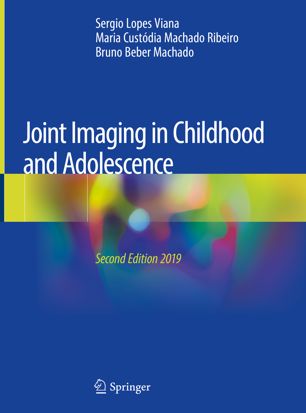Joint Imaging in Childhood and Adolescence 2019
دانلود کتاب پزشکی عکاسی مشترک در کودکی و نوجوانی
| نویسنده |
Bruno Beber Machado, Maria Custódia Machado Ribeiro, Sergio Lopes Viana |
|---|
| تعداد صفحهها |
413 |
|---|---|
| نوع فایل |
|
| حجم |
56 Mb |
| سال انتشار |
2019 |
89,000 تومان
این کتاب که اکنون در ویرایش دوم خود قرار دارد، یکی از معدود آثاری است که از زمان پیدایش روشهای مقطعی به تصویربرداری اسکلتی عضلانی کودکان اختصاص یافته است و تنها کتاب – تا آنجا که ما میدانیم – به طور خاص برای مفاصل نابالغ اسکلتی و آنها در نظر گرفته شده است. بیماری ها تعداد رادیولوژیست های اطفال به طور مداوم کاهش یافته است و تاکید کمتری بر آموزش رادیولوژیست های عمومی اطفال شده است، به طوری که این افراد بیش از پیش با یافته های تصویربرداری طبیعی و غیرطبیعی در کودکان و نوجوانان ناآشنا می شوند. این می تواند منجر به تفسیر نادرست نتایج طبیعی و عدم تشخیص نتایج غیرطبیعی آزمایش شود.
اگرچه این کتاب در درجه اول برای رادیولوژیست ها در نظر گرفته شده است، اما برای روماتولوژیست های عمومی، روماتولوژیست های کودکان، متخصصان اطفال، جراحان ارتوپد و همه کسانی که در تشخیص و درمان کودکان و نوجوانان مبتلا به شکایات آرتریت نقش دارند، سود زیادی خواهد داشت. از زبان ساده و در دسترس استفاده می کند و اطلاعات عمیقی را که رادیولوژیست ها درخواست می کنند ارائه می دهد، در حالی که هنوز برای غیر رادیولوژیست ها قابل درک است. اگرچه ساختار آن سست و منطقی است، اما فصول همه مستقل هستند. تصاویر بسیار مصور او ترکیبی از قدرت تصویری رادیوگرافی های باستانی است که ناهنجاری های اواخر مرحله را نشان می دهد که امروزه به ندرت دیده می شود، با جذابیت تصویربرداری مدرن و توانایی آن در تشخیص علائم اولیه و یافته های ظریف. نکات اصلی در پایان هر فصل خلاصه شده است.
با ارائه اطلاعات ضروری در مورد تصویربرداری از مفصل نابالغ، نویسندگان امیدوارند ابزار مفیدی برای کمک به رادیولوژیست ها (به طور یکسان) برای مقابله با چالش های روزانه تفسیر معاینات کودکان ارائه کنند. به زودی هوش مصنوعی (AI) قادر به انجام تشخیص های اولیه رادیولوژیکی خواهد بود. با این حال، رادیوگرافی اسکلتی عضلانی کودکان پیچیده و پر از جنبه است و تسلط بر این زمینه در این زمان در حال تغییر می تواند تفاوت بسیار مهمی در حرفه رادیولوژیست در قرن بیست و یکم باشد.
This book, now in its second edition, remains one of very few works devoted to pediatric musculoskeletal imaging since the advent of cross-sectional methods, and the only one – to the best of our knowledge – specifically dedicated to the skeletally immature joint and its diseases. There has been a steady decline in the number of pediatric radiologists, and less emphasis has been given to pediatric training for general radiologists, so that the latter are more and more unfamiliar with normal and abnormal imaging findings in children and adolescents. This can lead to the misinterpretation of normal findings and failure to recognize abnormal exam results.
Even though this book is intended primarily for radiologists, it will also greatly benefit general rheumatologists, pediatric rheumatologists, pediatricians, orthopedic surgeons and all those involved in the diagnosis and treatment of children and adolescents with articular complaints. It employs simple and accessible language, so that it provides the in-depth information required by radiologists, while still being understandable for non-radiologists. Although its structure is fluent and logical, the chapters are all self-contained. Richly illustrated, its imagery combines the pictorial strength of old radiographs, which display late-stage abnormalities rarely seen today, and the appeal of modern imaging and its ability to detect early signs and subtle findings. Key points are summarized at the end of each chapter.
By presenting essential information on imaging of the immature joint, the authors hope to provide a useful tool to help radiologists (musculoskeletal specialists and generalists alike) face the daily challenges of interpreting pediatric exams. Soon, artificial intelligence (AI) will be able to perform the most basic radiological diagnoses. Nevertheless, pediatric musculoskeletal radiology is complex and full of facets, and mastering this area in this ever-changing time can be a very important differential in the career of the 21st century radiologist.




